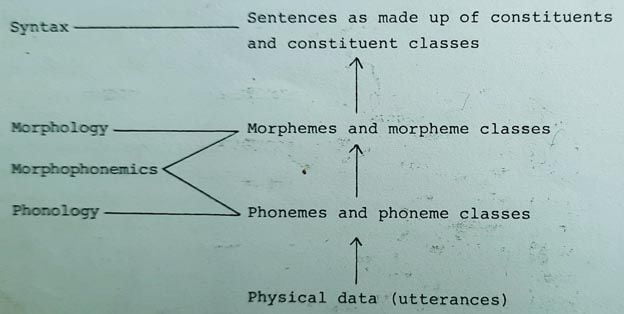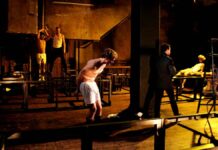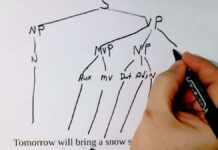The beginning of the 20th century was marked by a new approach to grammar suggested by linguists like Ferdinand de Saussure and American linguists such as Franz Boas, Edward Sapir, and Leonard Bloomfield. This school of linguistics is called Structuralalism. It arose as a reaction against the approach of the traditional grammarians of the 17th, 18th, and 19th centuries.
An essential factor in the development of American structural linguistics was the influence of behaviouristic psychology. The central assumption of behaviourism is that every aspect of human behaviour can be explained by indicating a specific stimulus that calls forth a particular response:
S –> R
Bloomfield, one of the prime movers of American Structuralism, was the first linguist to appeal to behaviourism to illustrate his conception of the central function of language. The speech act is a linguistic substitute response, which in turn acts as a linguistic substitute stimulus on the hearer and results in a reaction on his part. Schematically: S –> r…s –> R (where r = verbal response and s = verbal stimulus). According to Bloomfield, “A speech act or utterance then is a special aspect of human behaviour, and the totality of utterances which can be made in a speech community constitutes the language of that speech community”.
An utterance comprises three components: S, R and r…s. S and R are closely interrelated and constitute the content side of an utterance. By contrast, r…s, a physically manifest sound stretch, includes an utterance’s expression side. In principle, it is the goal of linguistics to account for the relationship between the content side and the expression side of language. In human speech, different sounds have different meanings. Studying language means analysing this coordination of certain sounds with specific meanings.
In analysing the expression side of language, the linguist has a corpus of recorded utterances at his disposal. In approaching his corpus, the linguist makes the following assumptions:
- Utterances are tokens of an underlying system.
- Given a set of carefully defined procedures, the underlying system can be discovered by processing the data.
- No constructs may appear in the grammar, which is not directly warranted by the physical data.
One of the most essential concepts in structural grammar is ‘class of’. This being the case, structural linguistics is often referred to by transformational generative grammarians as taxonomic linguistics. The taxonomic model of linguistic description, as it developed over the years, may be represented diagrammatically in roughly the following way:

The grammar has four components (or levels of analysis): phonology, morphology, morphophonemics, and syntax. Thus, a structural grammar of a language is essentially an inventory of units established at the various levels of analysis and suitably classified into a set of procedurally defined classificational constructs.
American linguistics was closely linked with anthropology during the first half of the 20th century. Anthropological linguistics reinforced the taxonomic conception of grammar. Structuralists believed that each language was a unique system of communication that should be studied in its terms.
Structural linguists began to study language in terms of observable and verifiable data and describe it according to the behaviour of the language as it was being used. These descriptive linguists emphasised:
- Spoken language is primary, and writing is secondary
- The synchronic study of language should take precedence over its diachronic study.
- Language is a system of systems.
Structural linguists attempted to describe language in terms of its structure and tried to look for regularities and patterns or rules in language structure. Bloomfield envisaged that language structure was associated with phonemes as the unit of phonology and morphemes as the unit of grammar. Phonemes are the minimal distinctive sound units of language. The word tap consists of three phonemes: /t/, /æ/ and /p/. Morphemes are larger than phonemes as they consist of one or more phonemes. The word playing consists of two morphemes, play and ing, whereas it consists of phonemes /p/, /l/, /eɪ/, /ɪ/ and /ŋ/. So, to study the structure of a sentence, a linguist must be aware of the string of phonemes or morphemes that make up the sentence.
Look at this sentence: The unlucky player played himself out.
As a string of phonemes, it is /ðɪ ʌnlʌkɪ pleɪə pleɪd hɪmself aʊt/
As a string of morphemes, the structure is The-un-luck-y-play-er-play-ed-him-self-out.
This type of approach concerning language structure was based on a desire to be completely precise, empirical, logical, and scientific as opposed to traditional grammarians’ unscientific, illogical, and prescriptive approach.






























